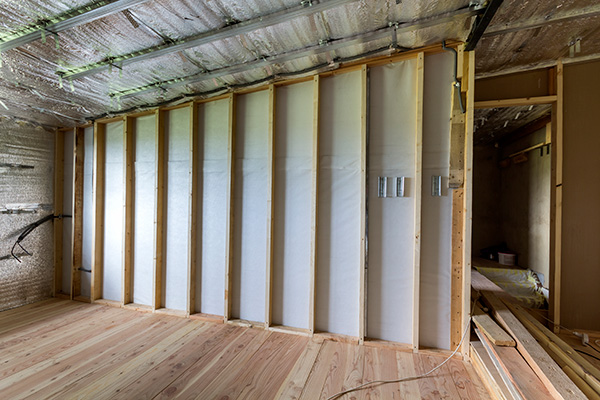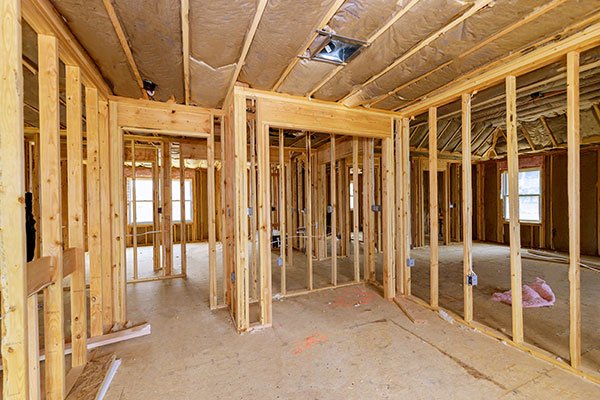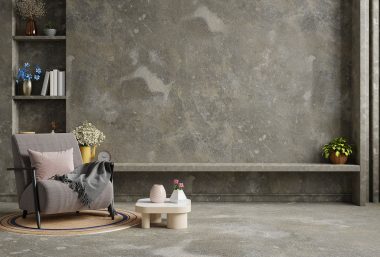Fur out wall, benefits, and installation: A complete guide
Top blog articles
Want to know what wall fur out means in the construction industry? If you’re one of those people who are unfamiliar with the term, don’t worry, this blog will update you about a furred out wall, its benefits, and how a wall fur out is done.
What does it mean to fur out a wall?
A fur out wall aka furring wall is basically a wall that’s been made thicker, by using furring strips, than what was originally constructed. The primary reason for furring a wall is to add to its depth or thickness. It’s like building a wall of furring strips inside an existing wall. For the uninitiated, furring strips are thin strips of wood or metal that let you build the inside wall.
Wall fur out is a construction technique where these thin strips of wood or metal are attached to the original wall to add depth. Keep in mind that these furring strips have to be screwed or nailed into the wood or concrete wall. Whether for improving insulation, soundproofing, or preparing for wall paneling, furred out walls offer several practical advantages – all of which we will discuss below.
However, there’s more to this process than simply thickening the wall. It involves precise planning and careful construction to ensure that the final surface is smooth, level, and ready for finishing touches such as drywall or wood paneling.
Keep in mind that a furred out wall will be thicker and will stand out more than the original wall. Also, it may make a room appear a bit smaller.
Whether you’re using these wood or metal furring strips on the ceiling or the walls, you’ll get a flat and smooth surface after the project’s completion. Keep in mind that these furring strips have to be screwed or nailed into the wood or concrete wall.
How much does it cost to fur out a wall?
The average cost to fur out wall ranges between $2.14 to $2.55 per square foot. Keep in mind that this cost can vary significantly with site conditions, the scope of the remodel, labor costs, and location.
Why should you fur out a wall?

There are many reasons why a homeowner may want to fur or furr out a wall. Some of the advantages of a wall fur out include:
- Improved home insulation: One of the primary reasons for furring out a wall is to improve the insulation. Adding a layer of insulation between the original wall and the new furring structure can help regulate indoor temperatures, making your home warmer in the winter and cooler in the summer. This can also lead to reduced energy bills.
- Enhanced soundproofing: Furring out walls can also act as an effective sound barrier, making it perfect for home offices, media rooms, or any space where you want more privacy and quiet. The added thickness and ability to insert sound-dampening materials between the layers help in reducing noise transmission.
- Creating level surfaces: If your home has uneven walls or ceilings, furring strips can help create a level surface. Whether you’re dealing with warped walls or old construction imperfections, furring allows you to fix these issues without having to demolish and rebuild entirely.
- Facilitating wall finishes
Furred out walls make it easier to install drywall, wood paneling, or other surface finishes. If you’re adding built-in cabinets or other features that require a sturdy, level surface, this method can give you the foundation you need.
Read more: What is skim coating
How to furr out a concrete wall?
Whether you own a residential property or a commercial building, it’s always a good idea to hire a licensed professional for furring walls made of concrete. The reason is that attaching furring strips to a concrete wall can be a tad frustrating. Plus, you need correct measurements and tools.
But if you’re an experienced DIYer, you can go ahead with the home improvement project by all means. We’ll outline some of the steps on how to fur out a wall so that you know exactly what you’re going for.
- Know the construction materials you’ll be using to finish the walls. For a plaster finish, space your furry strips close together. For wood planks, space out your furring strips more.
- Remove all the base paneling and trim. And, anything that might come in the way — including doors, light switch covers, or radiators.
- Always ensure that the furring strips are attached vertically to make finishing a wall easier.
- Use a tape measure (on top of the wall as well as the bottom) to mark dots every 16 inches. Join the dots. This is where you should vertically attach the furring strips.
- Attach strong and reliable anchors by drilling holes directly on the concrete and inserting the anchors into the holes.
- Position the furring strips correctly and tighten up the screws.
- Attach a drywall or wood paneling, and reattach the trim.
- You can now start decorating the wall as you wish.
When the above steps are completed, you can start decorating the wall. If you are an avid party lover or want to DIY wall decoration with a low budget, custom neon signs are definitely a good choice.
When you hold a party at home, neon signs can illuminate your party, create a lively atmosphere, and enjoy the party under cool lights. When you are not holding a party, neon signs are also a good lighting tool.
How to furr out a wall with wood studs

When it comes to furring out a wall with wooden planks or a stud wall, you need to space out your furring strips — making sure that the vertical lines are directly over the studs. You can buy a stud finder from your local hardware or home improvement store.
Once you’ve located the studs, drill the holes and insert the anchors. Attach the furring strips, and install the drywall. You can apply a coating of adhesive on one side of the wood furring strips for additional support before attaching them.
Read more: Sip panels cost
Last thoughts
Furring is a great way to expand the thickness of a wall using furring strips. So, if you’re unhappy with the existing wall surface or the size of an interior wall, this process will surely get you the kind of dimensions and level surfaces you’re looking for.
Also, a furred out wall will make home insulation and soundproofing easier. And, once it’s done, you’ll have a flush-looking wall or ceiling. Although it may slightly reduce the size of your room, the benefits — such as energy efficiency, sound control, and improved aesthetics — often outweigh the downsides. There’s no doubt that a wall fur out is a practical and cost-effective way to upgrade your home’s interior spaces.
Read more: Concrete block retaining wall










Your opinion matters, leave a comment